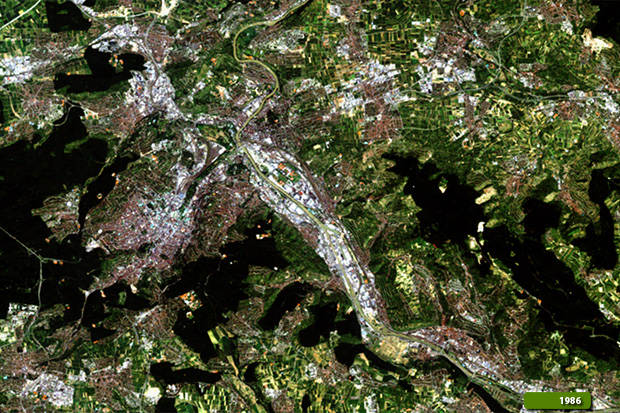|
Stuttgart, Germany
Stuttgart is the capital and largest city of the state of Baden-Württemberg in southwest Germany. The sixth-largest city in Germany, Stuttgart has a population of 600,068 (October 2014) while the greater Stuttgart Metropolitan Region has a population of 5.3 million (2008), being the fourth-biggest in Germany after the Rhine-Ruhr area, Berlin/Brandenburg and Frankfurt/Rhine-Main. The city lies at the centre of a densely populated area, surrounded by a ring of smaller towns. This area called Stuttgart Region has a population of 2.7 million. Stuttgart is spread across a variety of hills (many of them vineyards), valleys and parks - unusual for a German city and often a source of surprise to visitors who primarily associate the city with its industrial reputation as the 'cradle of the automobile'. Stuttgart has the status of Stadtkreis, a type of self-administrating urban county. It is also the seat of the State Parliament and State Government of Baden-Württemberg, the Evangelical-Lutheran Church in Württemberg as well as one of the two co-seats of the Roman Catholic Diocese of Rottenburg-Stuttgart. The city of Stuttgart ranked 21st globally in Mercer's 2015 liveability rankings, and 6th in Germany behind top-ranked cities such as Frankfurt, Düsseldorf and Munich. For economic and social innovation, the city was ranked 11th globally, second in Germany after Hamburg and 7th in Europe in 2009 out of 256 cities. The city's tourism slogan is "Stuttgart offers more". Under current plans to improve transport links to the international infrastructure (as part of the Stuttgart 21 project), in March 2008 the city unveiled a new logo and slogan, describing itself as "Das neue Herz Europas" ("The new heart of Europe"). For business, it describes itself as "Standort Zukunft", "Where business meets the future"). In 2007, the Bürgermeister marketed Stuttgart to foreign investors as "The creative power of Germany". In July 2010, Stuttgart unveiled a new city logo, designed to entice more business people to stay in the city and enjoy breaks in the area. Stuttgart is nicknamed the Schwabenmetropole (Swabian metropolis), because of the city's location in the centre of Swabia, and as a reference to the Swabian dialect spoken by its native inhabitants. In that dialect, the city's name is pronounced Schtugert or Schtuagerd. However, many non-Swabian Germans have emigrated to Stuttgart for economic reasons and 40% of Stuttgart's residents, and 64% of the population below the age of five are of foreign immigrant background. More information is available on Wikipedia

Our tour today stops over the city of Stuttgart. The city lies in south-west Germany about an hour from the Black Forest and a similar distance from the Swabian Jura mountains. Stuttgart is the capital of the state of Baden-Württemberg, on the River Neckar. The city is a commercial, manufacturing, and transport centre surrounded by vineyards. It is a major railway junction and river port, and is served by an international airport. Principal manufactured goods in the area include motor vehicles (Porsche and Mercedes-Benz for example are made here), printed fabrics, electrical and photographic equipment, precision instruments, machinery, textiles, beverages, chemicals, and metal and wood products. Tourism and business conferences are important to the economy. This comparsion created with the use of the Landsat 5 and 8 satellites with the combination of bands in visible colour and with a time window (before/after) of thirty years, aims to show the changes that the city has experienced from 1986 (Landsat 5) until 2015 (Landsat 8), in particular along the River Neckar where the Mercedes-Benz factory is located and the north east urban area of the city. Another aim of these images is to promote the opportunity to download Landsat data through the ESA portals, where images captured every day are made available in near real time to the users and the scientific community. Landsat full resolution data products are freely available for immediate download at:  View Landsat 5 TM high resolution image (JPG 1.7 MB) View Landsat 8 OLI high resolution image (JPG 1.8 MB)
|
|||||||||||||||||||||

